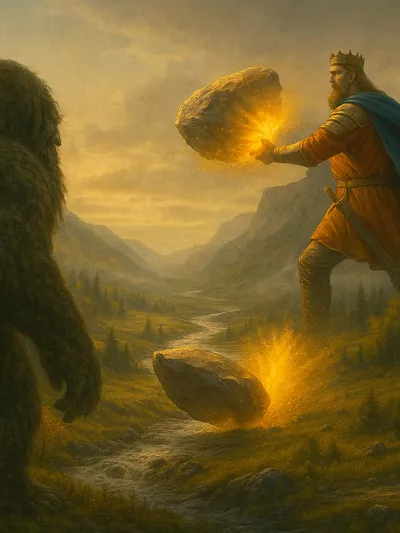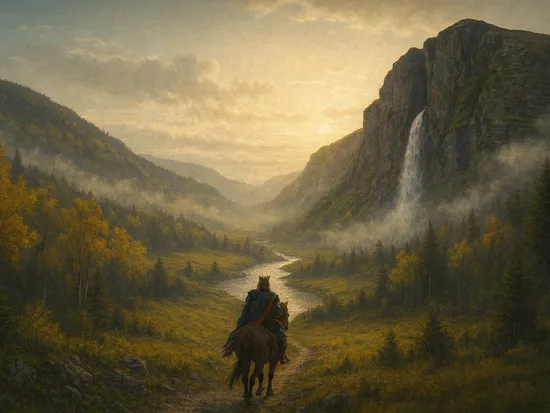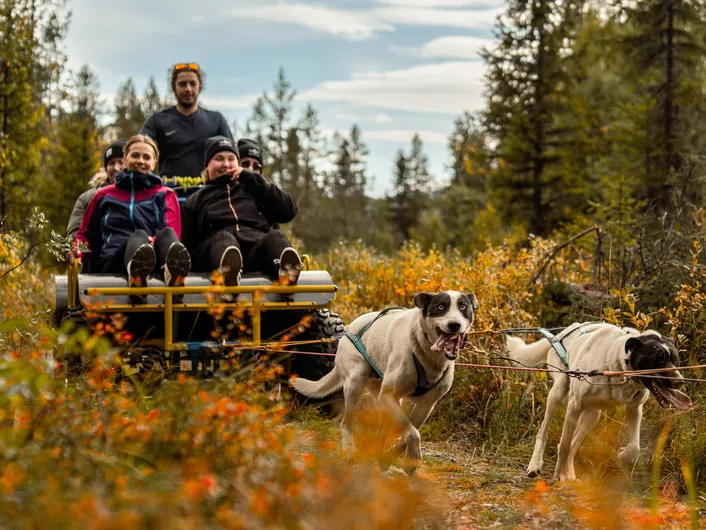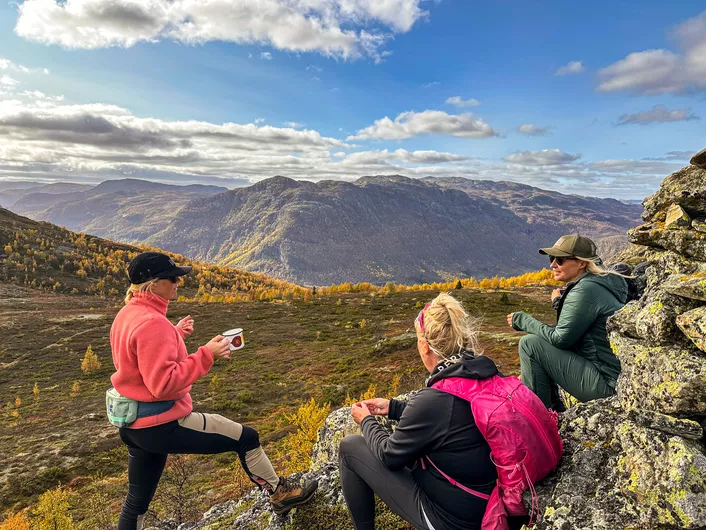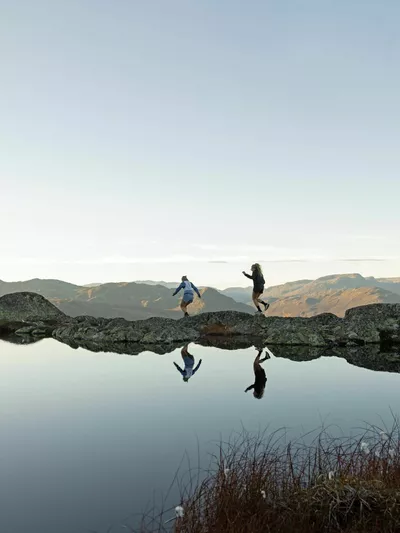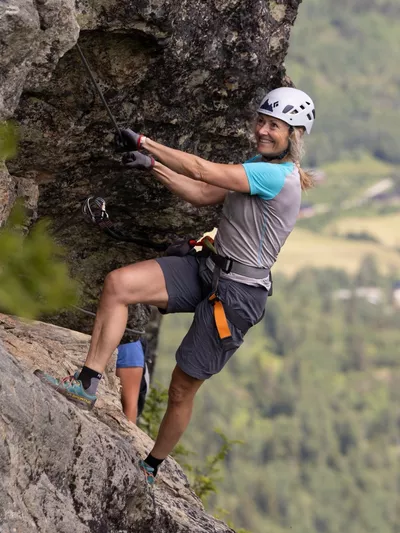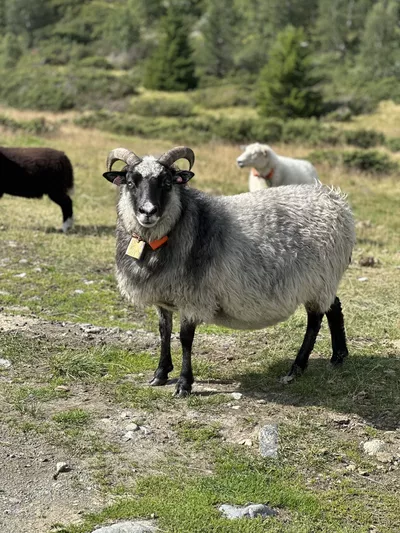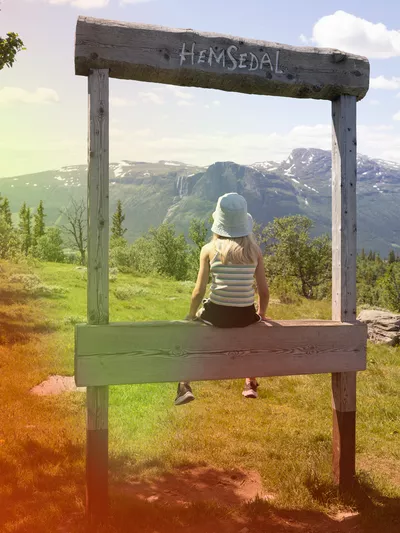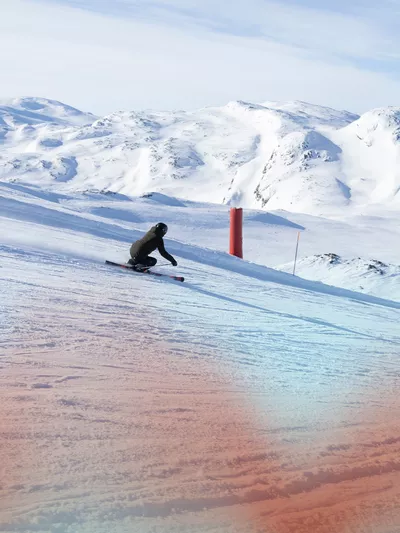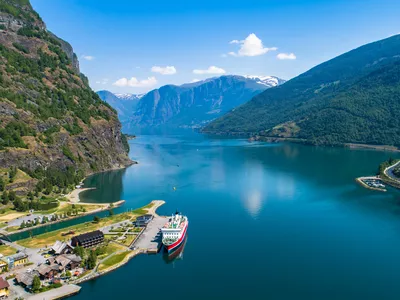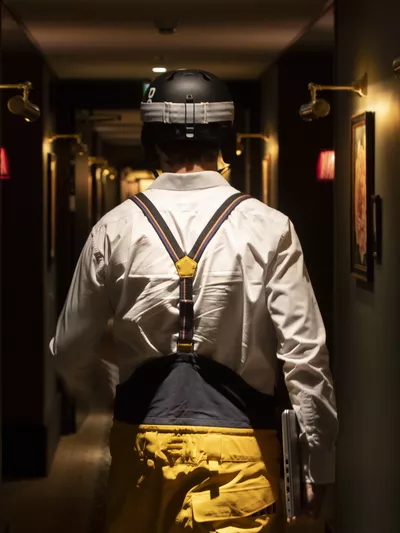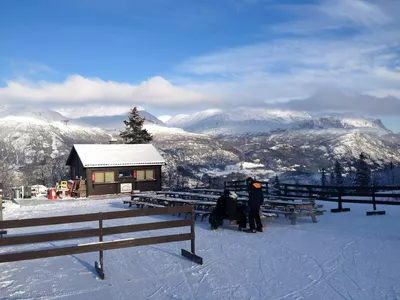Visit Klokkarsteinen,
a famous legend from Hemsedal
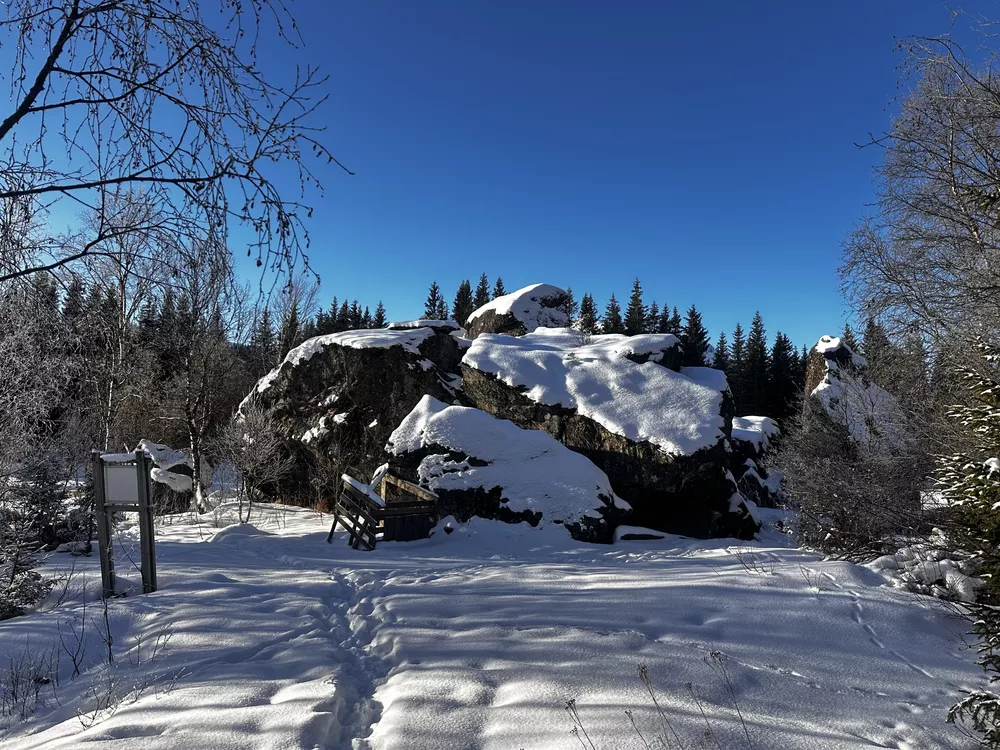
The Legend of Klokkarsteinen (St. Olavs Rock) – Hemsedal’s Very Own ‘Stonehenge’
At the western end of Ulsåk you’ll find a cluster of unusual rock formations – Hemsedal’s very own version of Stonehenge, if you like. And just like our neighbours in Britain, we’ve long wondered how these massive stones ended up here, right at the edge of the Hemsil river. As many have done before us, we lean on imagination to explain the mystery – and three well-known legends circle around Hemsedal’s Klokkarstein.
St. Olav’s Rock
There are several tales about St. Olav’s travels through Hemsedal. Olav Haraldsson, later known as Olav the Holy, was king of Norway from 1015 to 1028 and is remembered for bringing Christianity to the country. Local legends about him and Klokkarsteinen are likely the reason this natural formation is also known as St. Olav’s Stone.
According to one story, the curious rock ended up in the river when St. Olav crossed the valley with one foot on Grøtenuten and the other on Storehødn. As he strode across Hemsedal, he dropped a large stone he was carrying in his lap. It shattered on impact, but the remains still lie in the river today – known as Klokkarsteinen.
Another tale says that St. Olav arrived in Hemsedal from Valdres. After crossing the Fetja streams, he stopped to rest beside a small rocky outcrop. Once refreshed, he spotted Hydnefossen waterfall on the opposite side of the valley and set off to water his horse. But when he leapt across, a large stone came crashing down from what is now known as Kjerringkjeften (Hydnekjaften), tumbling towards him. This angered the king so much that he grabbed a massive stone and hurled it into the Hemsil river, where it remains to this day.
The final version – the one we’ve made a short film about – tells of a large troll trying to stop St. Olav on his journey through Hemsedal. The king would have none of it. He scooped up a handful of stones from Veslehødn, where Kjerringkjeften is today, and threw them at the troll. He missed, and the stone landed in the Hemsil river by Fossheim, where it still lies.
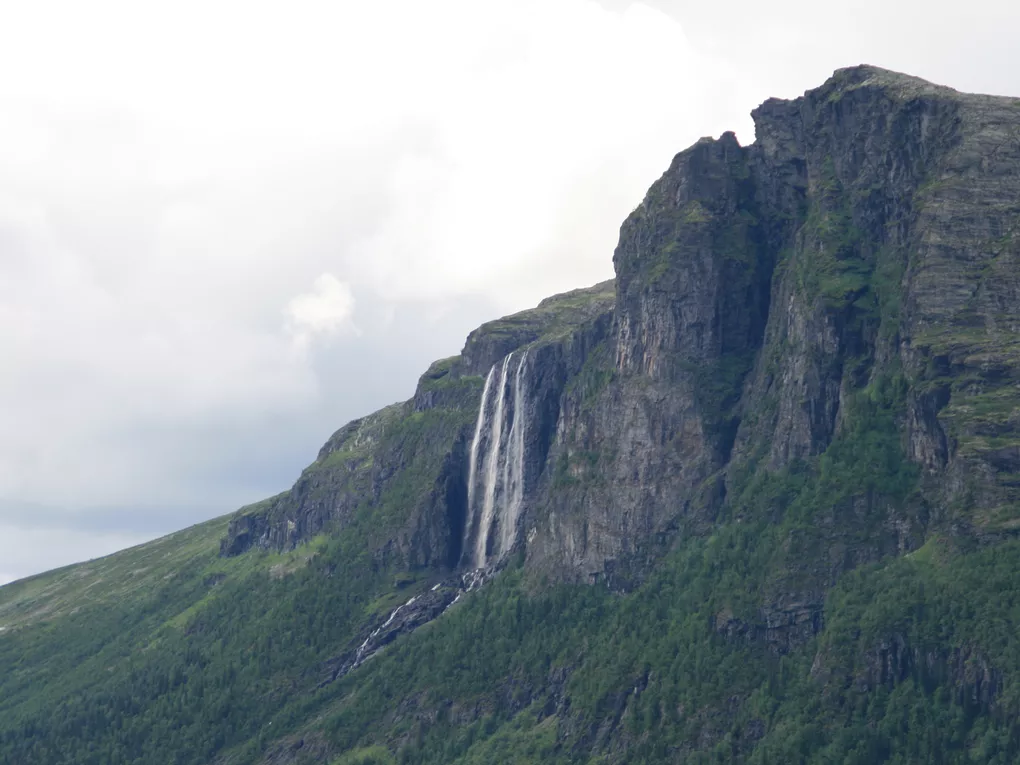
The Story of Klokkarsteinen and the Old Church Bells of Hemsedal
The church bells of Hemsedal once had such a beautiful sound that some thought they were far too fine for a small mountain community. They were meant to be sent to Drammen – but they never got that far…
The main waterway in Hemsedal, the Hemsil, is hardly navigable for long stretches, but in winter the frozen river was used as a travel route. The most striking formation along the river is Klokkarsteinen – a lasting example of how people have always tied legends to unusual rock formations and used imagination to explain how they came to be. It also stands as a reminder of Christianity’s influence on traditional rural life. Hemsedal Church hasn’t always been located where it stands today.
The old stave church, called Skadvin Church because it stood on the Skadengard (Skadvin) farm, once sat high above the valley in Kyrkjebøgrenda. At that time, the church bells didn’t hang in a tower, but in a separate belfry beside the church. Only those living on Kyrkjebøgardene, Haug and Trøim could hear them. This is why many believe the bell tower once stood on Stupulhaugen, at the edge of the hillside, so the sound could carry across the valley.
Version 1: St. Olav’s Stone
The bells had such a sweet tone that the authorities felt they were far too fine for a remote mountain parish. They were ordered to be transported to Drammen. The bells were loaded onto a sled and hauled across the ice. Everything went well until they reached St. Olav’s Stone. Suddenly the bells became so heavy that the horse couldn’t move the load an inch. A second horse was added, but it made no difference. The people of Hemsedal now understood what was happening. They turned around – and a two-year-old foal pulled the load effortlessly back to Hemsedal Church. Since then, St. Olav’s Stone has been known as Klokkarsteinen – “the Clerk’s Stone”.
Version 2: Klokkarsteinen
By Fossheim at Ulsåk, roughly at the foot of Grøteurda, lies Klokkarsteinen halfway out into the river. Three different folk stories try to explain how these stones ended up exactly where they are – and St. Olav plays a part in all of them:
Hans Flaten calls the stone St. Olav’s Stone. Once, St. Olav stepped across Hemsedal with one foot on Grøtenuten and the other on Storehødn. He carried a large stone in his lap, which he dropped into the river. It split into pieces but remains there still, known today as Klokkarsteinen.
Ola Eikre wrote down another version from Ola B. Løken: St. Olav once travelled from Valdres to Hemsedal. He crossed the Fetja streams and then stopped to rest by a steep rocky ledge. As he lay there, his breastplate left an imprint in the stone moss. After resting, he reached a small tarn, now called Olavstjednet, where he lowered a copper kettle full of silver coins. Then he noticed Hydnefossen across the valley and decided to ride over to water his horse. He leapt across and landed on Veslehødn with such force that a large piece of rock broke loose – what is now known as Hødnskjaften. Angered, he grabbed a huge stone and hurled it northwest. It landed in the Hemsil river.
Version 3
A final variation tells that when St. Olav once came to Hemsedal, a great troll tried to stop him. The king grabbed a handful of stones from Veslehødn, where Hødnskjaften is today, and threw them at the troll – but missed. The stone fell near Grøte.
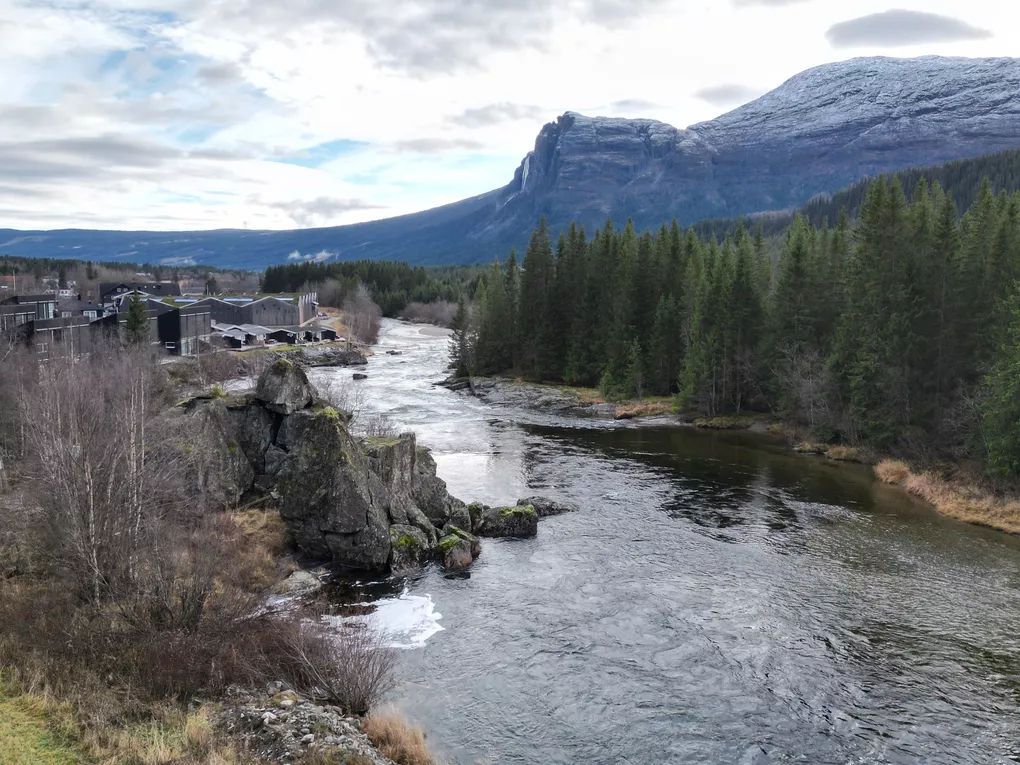
Klokkarsteinen cracks – but the story wasn’t done yet
The Hemsedal Stave Church was torn down in 1882. The original medieval bells now hang in Hemsedal Church, where they were used until 1990, when new bells with automatic ringing were installed. That same winter, Klokkarsteinen split open and a large piece of the stone fell into the Hemsil river.
A visit today
There’s still plenty to do around Klokkarsteinen. Among locals, the stone is a popular spot for climbing and bouldering – perfect for younger climbers, beginners, and anyone who’d rather save the high peaks for another day. Bring a packed lunch and a thermos, settle by the river, and enjoy a relaxed picnic. If it’s a scorcher, pack some swimwear too – the river offers a refreshing dip for those keen on a cool pause. One thing’s for sure: this is where imaginations can run wild. And remember to pass the legends on.
Directions
• Follow Riksvei 52 towards Ulsåk and park by the local shop.
• From there it’s just a short walk to Klokkarsteinen, through the holiday cabins in the Hemsil Hyttegrend.
Parking:
Park to the right of the shop, towards the cabins. A small footpath runs between one of the cabins and the larger house – follow it past the cabins until you reach a gravel road that leads directly to the rock formation.
You can also view Klokkarsteinen from the opposite side of the river. For that route, cross the suspension bridge located by the cabins. The bridge will take you to the other side of the Hemsil.
